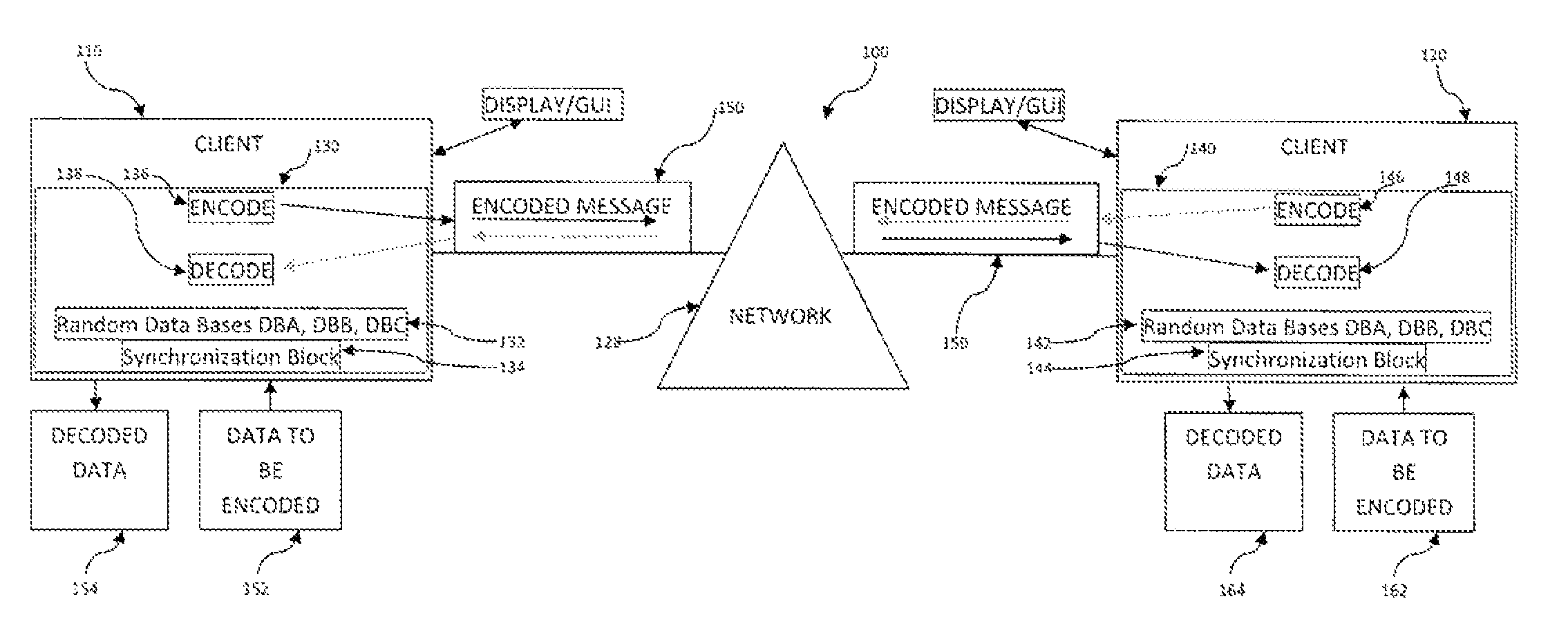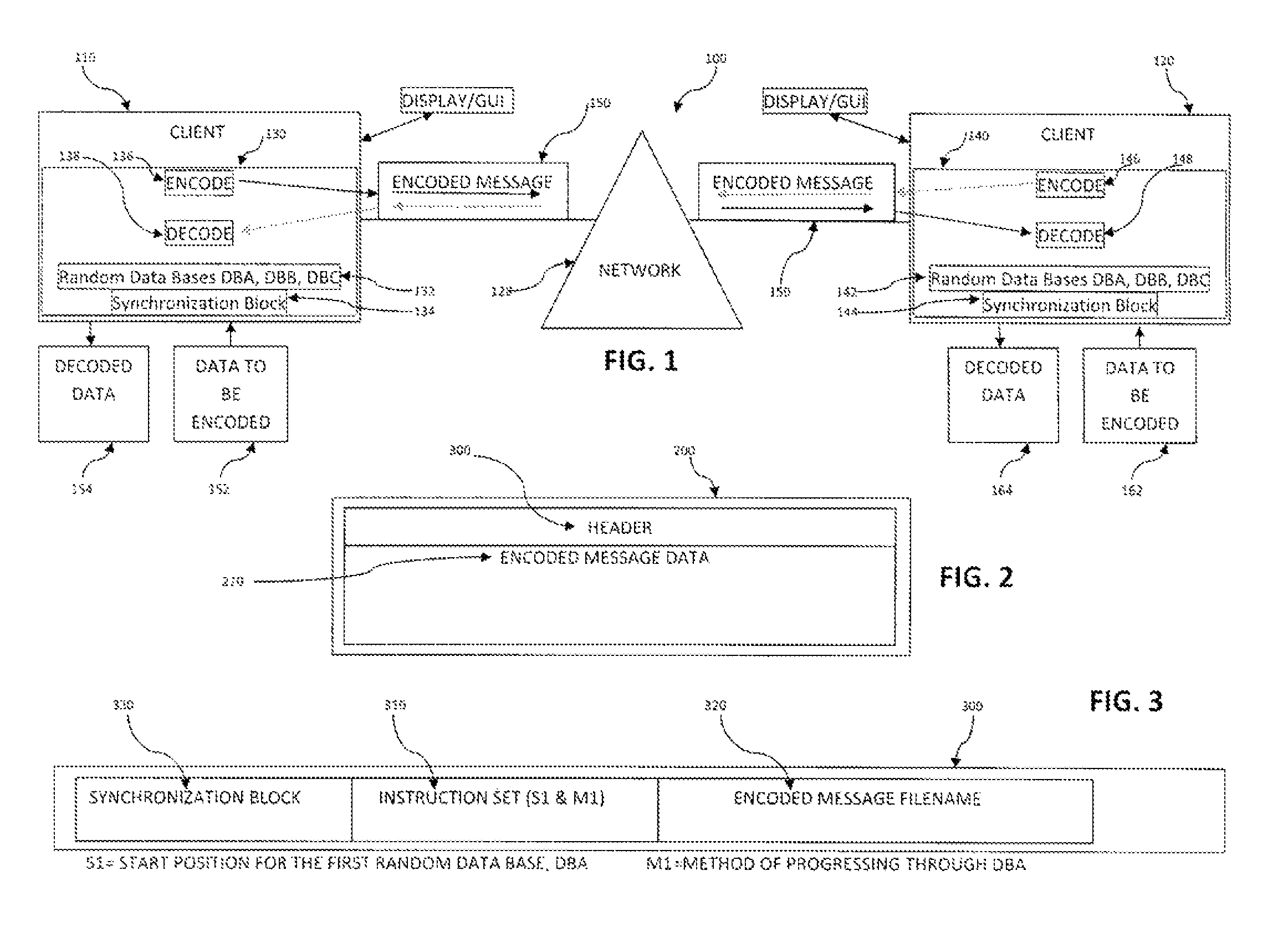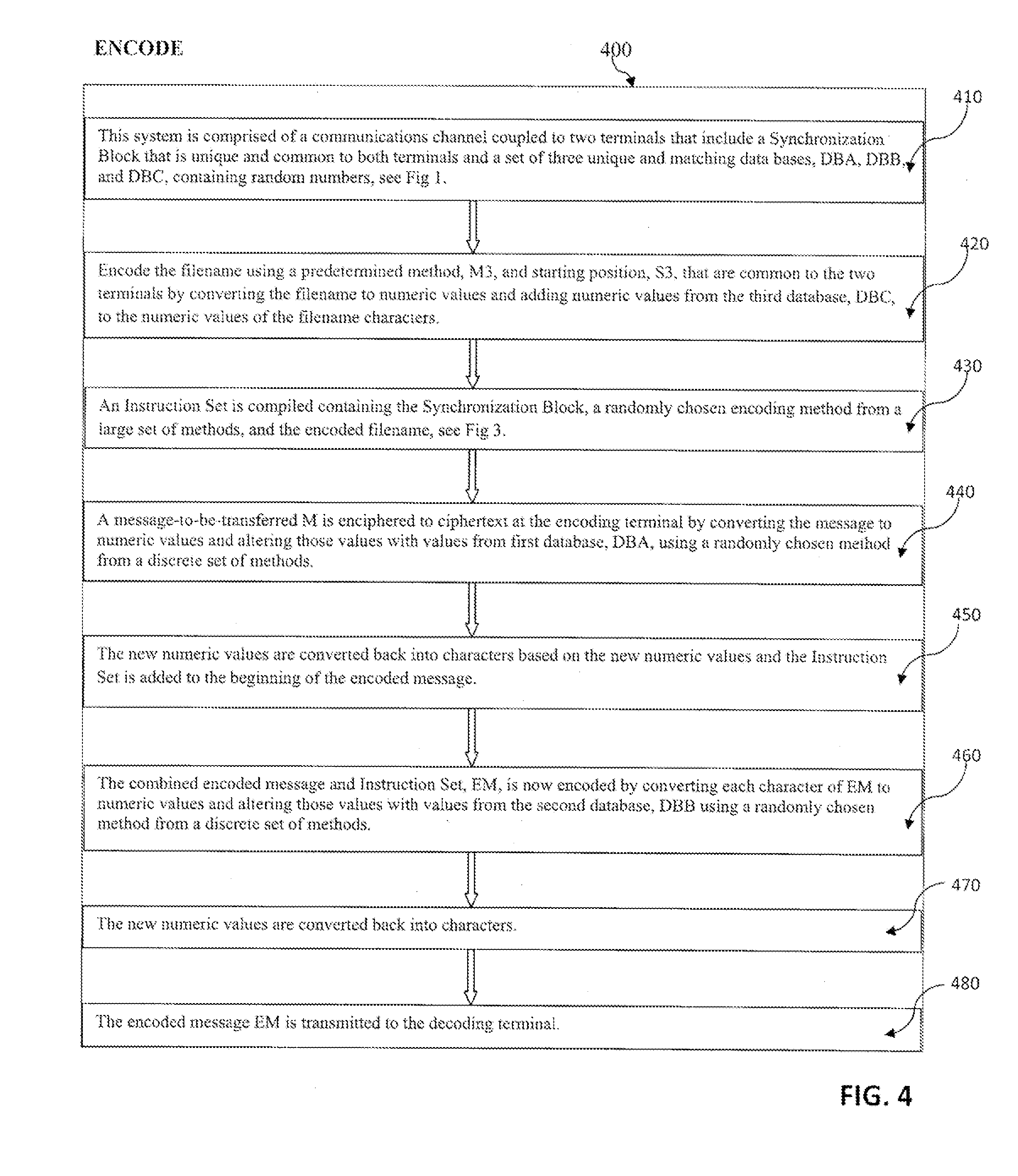System and method for encryption and decryption of data transferred between computer systems
a technology of encryption and decryption, applied in the field of systems, can solve the problems of reducing the value of one-time pads, affecting the continuous communication between users, and fundamentally insecure and readily accessible unencrypted data transmitted over a network, and achieves the effect of high security
- Summary
- Abstract
- Description
- Claims
- Application Information
AI Technical Summary
Benefits of technology
Problems solved by technology
Method used
Image
Examples
example message
[0059 to encode: This is a test
[0060]Numeric Value of T=084+Offset 039=123-->{
[0061]Numeric Value of h=104+Offset 024=128-->C=
[0062]Numeric Value of i=105+Offset 015=120-->x
[0063]Numeric Value of s=115+Offset 046=161-->
[0064]Numeric Value of =032+Offset 041=073-->I
[0065]Numeric Value of i=105+Offset 009=114-->r
[0066]Numeric Value of s=115+Offset 002=117-->u
[0067]Numeric Value of =032+Offset 034=066-->B
[0068]Numeric Value of a=097+Offset 045=142-->{hacek over (Z)}
[0069]Numeric Value of =032+Offset 020=052-->4
[0070]Numeric Value of t=116+Offset 034=150-->−
[0071]Numeric Value of e=101+Offset 039=140-->
[0072]Numeric Value of s=115+Offset 006=121-->y
[0073]Numeric Value of t=116+Offset 049=165-->¥
[0074]Encoded message characters {C=xIruB{hacek over (Z)}4−y ¥
[0075]Add the Instruction Set as the first line of the encoded message, (see generally FIG. 2). The encoded message will now appear in the following form:
[0076]p8C=RJ[T29360 / 9 / { },≡W}z−
[0077]{C=xIruB{hacek over (Z)}4−y ¥
[0078]This conc...
PUM
 Login to View More
Login to View More Abstract
Description
Claims
Application Information
 Login to View More
Login to View More - R&D
- Intellectual Property
- Life Sciences
- Materials
- Tech Scout
- Unparalleled Data Quality
- Higher Quality Content
- 60% Fewer Hallucinations
Browse by: Latest US Patents, China's latest patents, Technical Efficacy Thesaurus, Application Domain, Technology Topic, Popular Technical Reports.
© 2025 PatSnap. All rights reserved.Legal|Privacy policy|Modern Slavery Act Transparency Statement|Sitemap|About US| Contact US: help@patsnap.com



